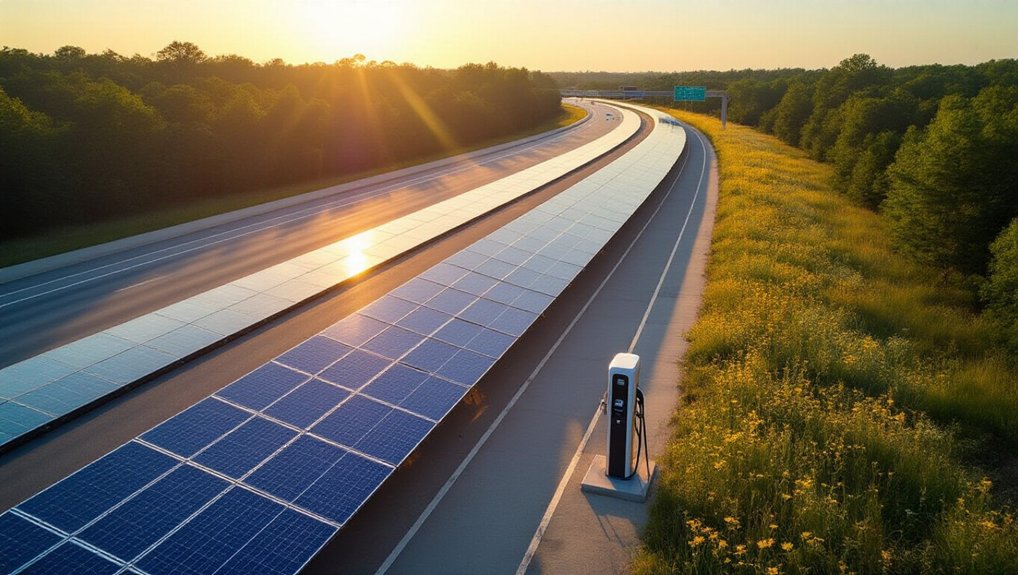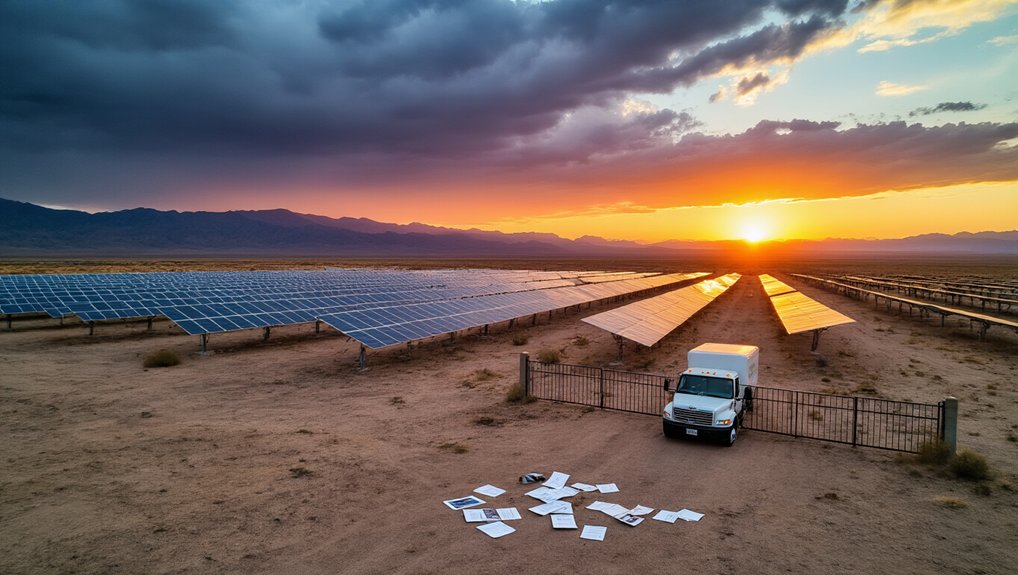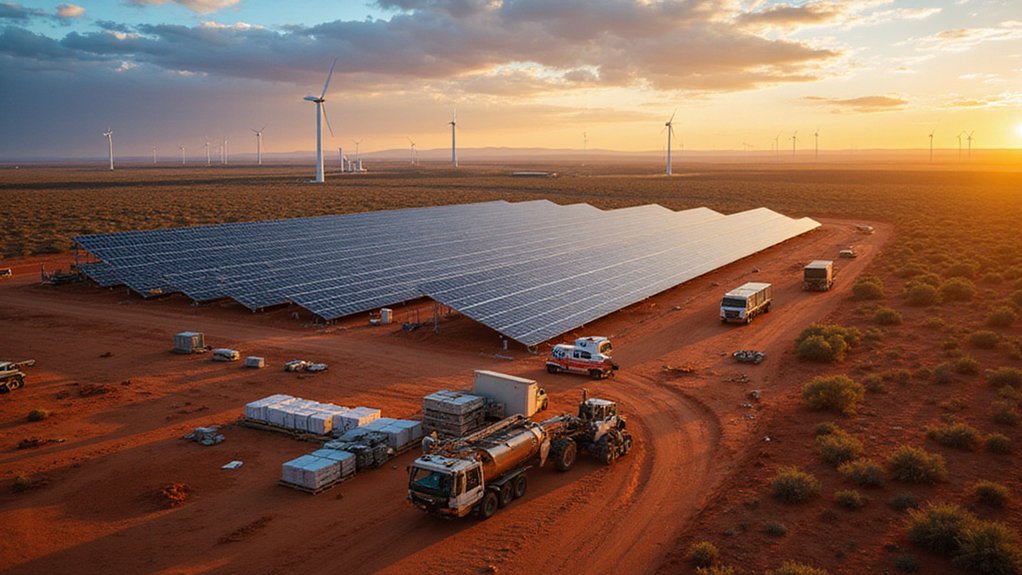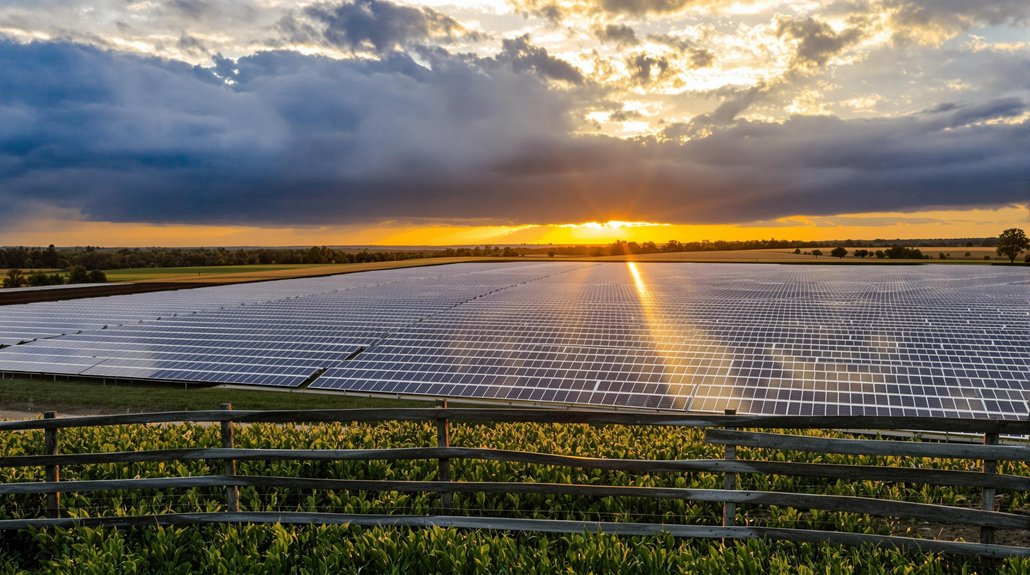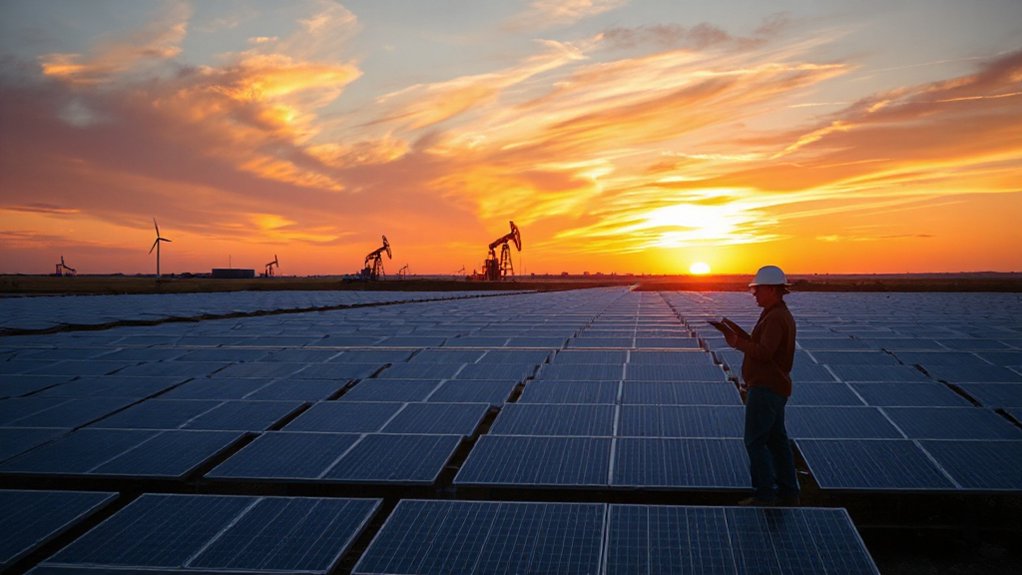A highway that generates electricity sounds like science fiction, but Georgia’s already doing it. The state’s turning its boring stretches of asphalt into power plants, and honestly, it’s about time someone figured out roads could do more than just sit there.
The star of this show is “The Ray,” a nonprofit laboratory on I-85 that’s basically a playground for solar nerds. They’re slapping solar panels on everything – interstate rights-of-way, city streets, even autonomous vehicle lanes. Because why not squeeze electricity out of every square foot of pavement?
The technology behind this madness comes from Wattway, a French company that somehow figured out how to make solar panels tough enough to survive being run over by trucks. These aren’t your grandma’s rooftop panels. They’re wrapped in a patented frame that can take a beating from traffic while still cranking out power. The first test happened at a Georgia Visitor Information Center in 2016, covering 50 square meters of ground that used to just bake in the sun. After five years of research by Colas and INES, they’d created road pavement that could handle heavy vehicles while generating clean energy.
Solar panels tough enough to survive being run over by trucks – because regular panels are for quitters.
Peachtree Corners jumped on board next, becoming the first American city to install street-level solar panels. Their setup generates over 1,300 kilowatt-hours annually – enough juice to power a public EV charging station. Free electricity for electric cars. From the street. Wild. The city’s Curiosity Lab sits on the site of Georgia’s first technology park, established way back in 1968, making it the perfect spot to test futuristic road tech.
The I-85 project near LaGrange went bigger, installing a full megawatt array in 2019. That’s real power flowing into the grid, lighting up LED safety lights at Exit 14 and supporting city services. The panels just sit there in the highway right-of-way, land that was doing absolutely nothing productive before.
Here’s the kicker: America has over 127,500 acres of highway right-of-way just waiting to be turned into mini power plants. Georgia’s proving it works. The Ray‘s even mixing in pollinator habitats with the solar installations because apparently making electricity isn’t enough – they want to save the bees too. This innovative approach aligns with the global trend toward renewable energy adoption, which accounted for 28% of global electricity in 2021.
Georgia Power, local governments, and tech companies are all throwing money at this. They’re betting that highways can do double duty: move cars and make electricity. Crazy? Maybe. But it’s happening.
References
- https://theray.org/tech/solar-paved-highway/
- https://www.tagonline.org/wp-content/uploads/2020/09/Solar_Interstates_Ray_Report_FINAL_Aug2020.pdf
- https://blog.drawdownga.org/driving-the-future-of-solar-roadways-in-georgia
- https://theray.org
- https://ampo.org/peachtree-corners-first-to-install-surface-solar-panels-on-city-street/
